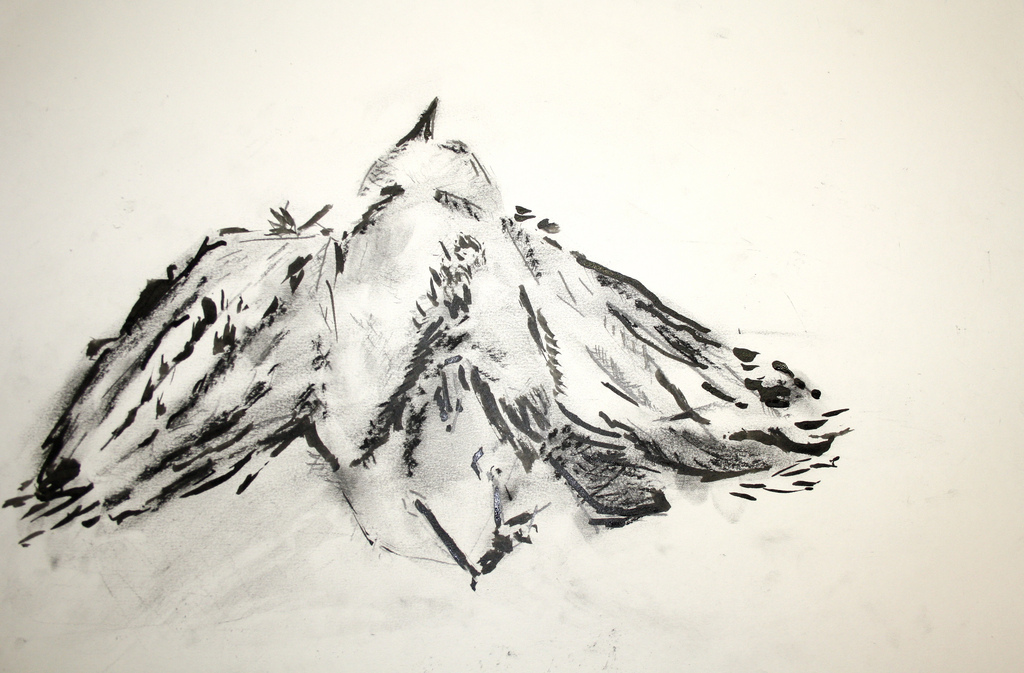Photo by Sophia.
I’ve been having an insightful shuffle through Mihaly Csikszentmihalyi’s book Creativity: The Work and Lives of 91 Eminent People. Mihaly is a seminal professor of Psychology and Management, and is the Founding Co-Director of the Quality of Life Research Center at Claremont. He writes:
“I have devoted 30 years of research to how creative people live and work, to make more understandable the mysterious process by which they come up with new ideas and new things. If I had to express in one word what makes their personalities different from others, it’s complexity. They show tendencies of thought and action that in most people are segregated. They contain contradictory extremes; instead of being an individual, each of them is a multitude.”
Nine out of the ten people in me strongly agree with that statement. As someone paid to be creative, I sometimes feel kaleidoscopic in my views or opinions, and that “multitude” of expressions sometimes confuses those around me. Why does that happen? My thoughts make cohesive sense to me, yet others sometimes feel that I am contradicting myself or switching positions. What is wrong with me?
Mihaly describes 9 contradictory traits that are frequently present in creative people:
01
Most creative people have a great deal of physical energy, but are often quiet and at rest. They can work long hours at great concentration.
02
Most creative people tend to be smart and naive at the same time. “It involves fluency, or the ability to generate a great quantity of ideas; flexibility, or the ability to switch from one perspective to another; and originality in picking unusual associations of ideas. These are the dimensions of thinking that most creativity tests measure, and that most creativity workshops try to enhance.”
03
Most creative people combine both playfulness and productivity, which can sometimes mean both responsibility and irresponsibility. “Despite the carefree air that many creative people affect, most of them work late into the night and persist when less driven individuals would not.” Usually this perseverance occurs at the expense of other responsibilities, or other people.
04
Most creative people alternate fluently between imagination and fantasy, and a rooted sense of reality. In both art and science, movement forward involves a leap of imagination, a leap into a world that is different from our present. Interestingly, this visionary imagination works in conjunction with a hyperawareness of reality. Attention to real details allows a creative person to imagine ways to improve them.
05
Most creative people tend to be both introverted and extroverted. Many people tend toward one extreme or the other, but highly creative people are a balance of both simultaneously.
06
Most creative people are genuinely humble and display a strong sense of pride at the same time.
07
Most creative people are both rebellious and conservative. “It is impossible to be creative without having first internalized an area of culture. So it’s difficult to see how a person can be creative without being both traditional and conservative and at the same time rebellious and iconoclastic.”
08
Most creative people are very passionate about their work, but remain extremely objective about it as well. They are able to admit when something they have made is not very good.
09
Most creative people’s openness and sensitivity exposes them to a large amount of suffering and pain, but joy and life in the midst of that suffering. “Perhaps the most important quality, the one that is most consistently present in all creative individuals, is the ability to enjoy the process of creation for its own sake. Without this trait, poets would give up striving for perfection and would write commercial jingles, economists would work for banks where they would earn at least twice as much as they do at universities, and physicists would stop doing basic research and join industrial laboratories where the conditions are better and the expectations more predictable.”
Sometimes what appears to be a contradiction on the surface is actually a harmony in disguise. My problem has been primarily one of communication. I am learning to let people know what I am thinking and why, and explaining myself in a way that helps them understand why I am discussing multiple perspectives instead of just cleanly stating my own. At first it might not make sense, but give me/us long enough, and it will.


The only reason why this very panoramic mindset is considered “Jekyll and Hyde” by the mainstream must be understood by imagining the interpretation through the lens of the black and white thinker. The irony of the comments by the detractors lies in the fact that we already understand how they think but they can’t understand how we think despite a very basic description of the cognition in question. Knocking two pigeon holes together won’t get the tune quite right. They can’t even imagine the possibility that a different form of cognition and behavior might exclude their ego-centric own, and so a “horoscope” fantasy-attributed explanation is better suited to stretch the article’s meaning to include themselves in it. This article was written for them to provide insight and funnily they don’t believe we or the information in this article exists. Beginner tip: cultivate a response to nuance.
When snobby people tell me what I just said is a ‘non-sequitor’, I remong them of Einstein’s quote ” Intelligence is relating seemingly inrelated things’ So, I skipped a few steps. Figure it out, if you want to be with me (or simply ‘ask’)
When snobby people tell me what I just said is a ‘non-sequitor’ in the flow of the conversation; I remind them of Einstein’s quote ,” Intelligence is relating ‘ seemingly’ unrelated things’ . So, I skipped a few steps. Figure it out, if you want to continue talking with me (not to me) Simply ask or debate, don’t end the talk from your glass tower.
Very interesting and instructive. Thanks.
Nonetheless, I’d like to challenge the notion that there is such thing as “a creative.” As if in the “creative” resides a soul of unusual radiance and a mind of rare breadth. Before we are multitudes of intellectual contradiction, we are complicated in more fundamental ways. Some “creatives” got that way through conscious, concerted effort against long odds. Some “uncreatives” are very intelligent and imaginative people who have made different, perhaps bad, choices. Or who has been punished by misfortune. Or whose idiosyncrasies deprive them of recognition.
People are complicated, and people are different from one another. It strikes me as extremely simplistic, as beholden to artificial categories and lacking in nuance – in short, as uncreative – to propagate typologies, even if it feels like a pat on the back to those of us who aspire to lead creative lives.
Thank you.
I stumbled across your blog on twitter really randomly and really glad I did.
Thank you your blog answers a lot of question for me. I feel a lot of familiarity
with what you have written and written so well.
I really like your blog & the way you write. The pictures are very beautiful.
I like it. Makes sense.
it appears I’m not crazy after all …